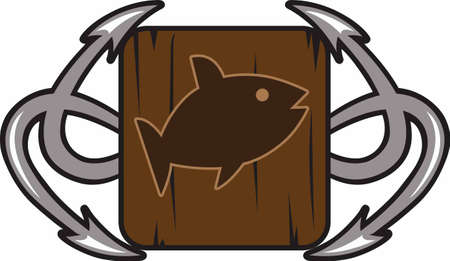Introduction to Indigenous Fishing Gear Practices in India
India, with its vast river systems, expansive coastline, and rich aquatic biodiversity, has nurtured a vibrant tradition of fishing that stretches back thousands of years. Across its diverse regions, indigenous handmade fishing gear represents not only the ingenuity of local communities but also their deep connection to the environment. These traditional tools—crafted from locally sourced materials like bamboo, coir, cotton, and reeds—are more than just functional implements; they are living artifacts of cultural heritage. Each state, from Kerala’s backwaters to Assam’s braided rivers, boasts unique gear such as cast nets (jala), bamboo traps (chepa jal), and hand-woven baskets. The designs and techniques have been passed down generations, adapting subtly to local fish species, water conditions, and ecological changes. In many Indian villages, the making and use of handmade fishing gear is woven into the fabric of daily life, social rituals, and seasonal festivals. This enduring legacy underscores both the resourcefulness and sustainability embedded in India’s traditional fishing practices—a testament to harmonious coexistence with nature long before modern industrial methods emerged.
Diversity of Traditional Fishing Equipment
India’s vast geography and varied aquatic ecosystems have given rise to a remarkable diversity of indigenous fishing gear, each tailored to local needs, water conditions, and cultural traditions. Across the country, from the coastal stretches of Kerala and West Bengal to the riverine communities along the Brahmaputra and Godavari, traditional handmade fishing tools remain integral to both sustenance and livelihood. Below is an exploration of some commonly used traditional fishing equipment in different regions:
| Type of Gear | Local Name | Region/Community | Main Material | Typical Usage |
|---|---|---|---|---|
| Cast Net | Jala / Jal | Bengal, Kerala, Andhra Pradesh | Cotton or nylon mesh with lead sinkers | Thrown by hand into shallow waters for small fish and prawns |
| Bamboo Trap | Chepa / Changdi / Koodi | Assam, Odisha, Tamil Nadu | Bamboo sticks and cane | Placed in streams or rivers to catch fish moving with water current |
| Hand Line | Pattai / Kaadi / Baitho | Maharashtra, Gujarat, Coastal Karnataka | Cotton or nylon line with baited hook | Used individually from boats or riverbanks for larger fish species |
| Fish Weir | Katha / Banda / Veesuvala | Bihar, Kerala backwaters, Sundarbans | Bamboo poles and branches woven together | Temporary barriers in tidal rivers or estuaries to trap fish during receding tides |
| Scoop Net | Dingra Jaal / Valai / Chandi Jaal | Punjab, Tamil Nadu, Goa | Bamboo frame with fine mesh netting | Scooping small fry or shrimp from shallow waters or ponds |
The Role of Local Knowledge and Environment Adaptation
The choice and construction of these gears are deeply influenced by local ecological knowledge. For example, fishermen in Assam fashion bamboo traps that blend seamlessly with riverbanks, while those along Kerala’s backwaters prefer large hand-thrown jala nets optimized for estuarine species. Materials such as split bamboo, locally spun cotton threads, coconut fibers, and natural dyes ensure sustainability and minimal environmental impact.
Community-Specific Innovations
Every community brings its own refinements: the intricate weaving patterns of Bengal’s fishing baskets (donga), the unique shape of Tamil Nadu’s koodi traps that mimic underwater rocks, and the multi-hooked hand lines used by coastal Konkan fishers for deep-sea catches. These tools are not just functional but are also expressions of local craftsmanship passed down through generations.
Preserving Diversity Amidst Change
While modern materials like nylon have supplemented traditional resources for durability, most indigenous fishers still value their handmade gear for its adaptability and affordability. The continued use and evolution of these diverse tools highlight the resilience of India’s fishing communities and their sustainable approach to harvesting aquatic resources.
![]()
3. Handcrafting Techniques and Local Materials
India’s indigenous fishing gear is renowned for its reliance on traditional handcrafting techniques, passed down through generations in coastal and riverside communities. The process of creating these gears is deeply rooted in local knowledge, using materials easily found in the surrounding environment.
Bamboo: The Backbone of Traditional Gear
Bamboo, known locally as baans, serves as a fundamental material due to its flexibility, strength, and abundance across Indian landscapes—from Assam to Kerala. Artisans skillfully split and weave bamboo strips to make fish traps (like the ‘Chepa Kood’ in Kerala or ‘Jakoi’ in Assam), baskets, and even frames for nets.
Coir and Cotton: Nature’s Strong Fibres
Coir, extracted from coconut husks predominantly along the Western Ghats and coastal Tamil Nadu, is twisted into strong ropes for tying bamboo frames or lacing nets. Cotton threads are spun by hand in many regions—especially West Bengal and Odisha—to create fine mesh netting (locally called ‘Jaal’). These natural fibres are preferred for their eco-friendliness and availability.
Regional Variations in Craftsmanship
The methods of crafting fishing gear vary significantly across India’s vast geography. In the Sundarbans, fishermen weave intricate cotton or jute nets suited for tidal creeks, while in Andhra Pradesh, cane and palm leaves are used to create lightweight traps for backwater fishing. Each region adapts materials based on local ecology, climate conditions, and the target fish species.
Cultural Continuity through Hand Skills
The act of making fishing gear by hand is more than just a livelihood—it’s a symbol of cultural continuity. Skills are often taught from elders to youth, ensuring the preservation of both technique and local dialects associated with specific tools. This artisanal approach not only sustains livelihoods but also strengthens community identity amidst rapid modernization.
4. Socio-Economic and Cultural Importance
Indigenous handmade fishing gear in India holds profound socio-economic and cultural value, especially within rural and coastal communities. These traditional tools are not merely instruments for catching fish; they are central to the livelihoods, heritage, and social fabric of countless families across states like Kerala, West Bengal, Assam, Odisha, and Tamil Nadu.
Supporting Rural Livelihoods
For many villages along Indias rivers, lakes, and coastline, fishing remains a primary occupation. The use of indigenous gear such as cast nets (jala), bamboo traps (chepa), and handlines (valai) provides affordable and sustainable means for small-scale fishers to earn a living. Locally sourced materials like bamboo, coir, and jute reduce production costs while ensuring accessibility for even the most marginalized households.
| Aspect | Description | Example States |
|---|---|---|
| Employment Generation | Handcrafting nets & traps supports artisans and fisherfolk families | Kerala, Assam |
| Income Source | Fish sales provide daily income for rural households | West Bengal, Odisha |
| Gender Roles | Women engage in net weaving & post-harvest activities | Tamil Nadu, Andhra Pradesh |
Sustaining Traditional Knowledge
The making and use of indigenous fishing gear represent a living repository of ecological wisdom. Techniques are passed down orally from generation to generation, preserving knowledge about local fish species, water patterns, and sustainable harvesting practices. This ensures resource conservation and helps avoid overfishing, as traditional gear is often selective in catch size and type.
Transmission of Skills
Youths learn by assisting elders during fishing seasons or community gatherings. This apprenticeship system fosters intergenerational bonds and safeguards heritage skills that modern equipment may threaten to erase.
Strengthening Community Identities
The significance of indigenous fishing gear extends beyond economics to shape collective identity. Festivals such as Meenakshi Kalyanam in Kerala or Magh Bihu in Assam feature communal fishing events using handmade gear, reinforcing unity and pride among villagers.
Cultural Expressions Related to Fishing Gear:
- Rituals: Blessings for new nets before the monsoon season.
- Folklore: Songs and stories celebrating legendary fishers.
- Craftsmanship: Unique weaving patterns mark regional identities.
Through these multiple dimensions—economic sustenance, preservation of indigenous knowledge, and cultural cohesion—handmade fishing gear continues to be an invaluable asset for India’s rural communities, reflecting a harmonious relationship with nature and tradition.
5. Adaptation to Modern Challenges
Across India, indigenous fishing communities have shown remarkable resilience in balancing their age-old traditions with the demands of a rapidly changing world. As modern technology and environmental pressures reshape the landscape of inland and coastal fisheries, many fishers are finding innovative ways to integrate new methods without losing their cultural roots. For instance, some communities along the Ganges and Godavari rivers continue crafting bamboo traps and hand-woven nets but now complement these with eco-friendly synthetic fibres for increased durability. This blend of traditional wisdom and contemporary material ensures gear remains effective while reducing cost and maintenance.
Sustainability is at the heart of this evolution. Traditional fishing gear is inherently selective—like the jal nets in West Bengal or the valai baskets in Tamil Nadu—which helps in minimising bycatch and protecting juvenile fish. However, increasing pressure on fish stocks, pollution, and climate change demand extra caution. Many local groups are now collaborating with NGOs and government agencies to monitor fish populations, adapt closed seasons, and promote sustainable harvesting. The use of biodegradable materials and participatory conservation programs has seen wide acceptance in regions like Kerala’s backwaters and Assam’s floodplains.
Fishers also face social challenges as younger generations migrate toward urban jobs, leaving gaps in traditional knowledge transfer. To address this, elders conduct community workshops during festivals like Makar Sankranti or Holi, ensuring techniques such as net weaving or trap making remain alive. Furthermore, digital literacy campaigns are empowering youth to market organic catch online using smartphones—combining ancestral skills with modern entrepreneurship.
The journey of adaptation is not without its hurdles; however, the commitment of Indian fishing communities to sustainability, conservation, and cultural heritage continues to inspire hope for future generations. By blending tradition with innovation, these fishers ensure that their time-honoured practices remain relevant in today’s fast-changing world.
6. Preserving Indigenous Fishing Heritage
Indias indigenous fishing heritage represents a reservoir of traditional knowledge, ecological wisdom, and community identity. In recent decades, the continuity of these handmade fishing techniques has faced challenges from modernization, mechanization, and changing socio-economic dynamics. However, communities across India, along with NGOs and policymakers, are taking significant steps to safeguard and revive these age-old practices.
Community-Led Conservation Initiatives
Local fishing communities play a pivotal role in preserving their ancestral methods. Elders actively pass down skills such as weaving bamboo traps or crafting hand-thrown nets to younger generations through hands-on workshops and seasonal training sessions. Festivals and local competitions dedicated to traditional fishing gear further reinforce cultural pride and ensure that these skills remain relevant in daily life.
NGO Support and Documentation
Numerous NGOs have recognized the urgent need to document and promote indigenous fishing practices before they disappear. Organizations like the South Indian Federation of Fishermen Societies (SIFFS) work closely with coastal and riverine communities to archive knowledge, produce educational materials in regional languages, and organize exhibitions that showcase handmade gear. These efforts not only celebrate craftsmanship but also empower fishers by connecting them with eco-tourism opportunities and niche markets for artisanal products.
Policy Advocacy and Legal Protection
The Indian government, together with state fisheries departments, has initiated programs aimed at protecting traditional livelihoods. Policies now increasingly recognize the value of sustainable small-scale fishing and provide support through subsidies for natural materials, fair access to water bodies, and legal recognition of customary rights. Additionally, certain states have introduced schemes that incentivize the use of eco-friendly gear over mechanized alternatives, thus helping both conservation efforts and local economies.
Challenges and the Way Forward
Despite positive steps, challenges remain in ensuring widespread adoption and respect for indigenous techniques. Urban migration, competition from industrial fisheries, and environmental changes threaten traditional practices. Continuous dialogue among stakeholders—communities, NGOs, researchers, and policymakers—is essential to craft adaptive strategies that balance tradition with innovation.
A Shared Responsibility
Preserving Indias indigenous handmade fishing gear is more than a matter of cultural nostalgia; it is vital for ecological sustainability, social cohesion, and rural livelihoods. By supporting community-driven initiatives, fostering inclusive policies, and raising awareness about the unique value of these traditions, contemporary India can ensure that its rich fishing heritage endures for generations to come.


